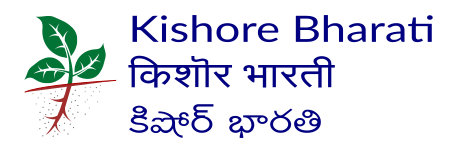Right from the beginning of its rural campus in 1972, Kishore Bharati started promoting the appropriate technology of constructing pre-fabricated cement concrete rings (4 feet diameter) for making ‘mini-tubewells’, popularly known as Ring Wells. Nine live models of Ring Wells, each as an effective source of irrigation and potable water, were displayed on the campus. Pre-fabricated cement rings were made available at a ‘no loss, no profit’ basis to farmers along with training in the technique of digging and construction. Its low-cost easy-to-dig and easy-to-maintain technology enabled the relatively poor peasants of the adjacent region to have access to irrigation for the first time in the living memory of their family’s economic history. With this intervention, the irrigation potential of the Bankhedi Block increased several-fold, transforming its primarily rain-fed agricultural economy into a two- or three-crop economy. The major beneficiaries were small and marginal farmers for whom the tube-wells with submersible pumps were beyond reach because of their unaffordable cost and complicated technology of both digging and maintenance. Approximately five thousand farmers and other residents belonging to the eastern region of Hoshangabad District and the neighbouring Narsinghpur and Raisen Districts were benefited, who constructed Ring Wells for the purpose of irrigation as well potable water.
Iconic One Theme | Powered by Wordpress
